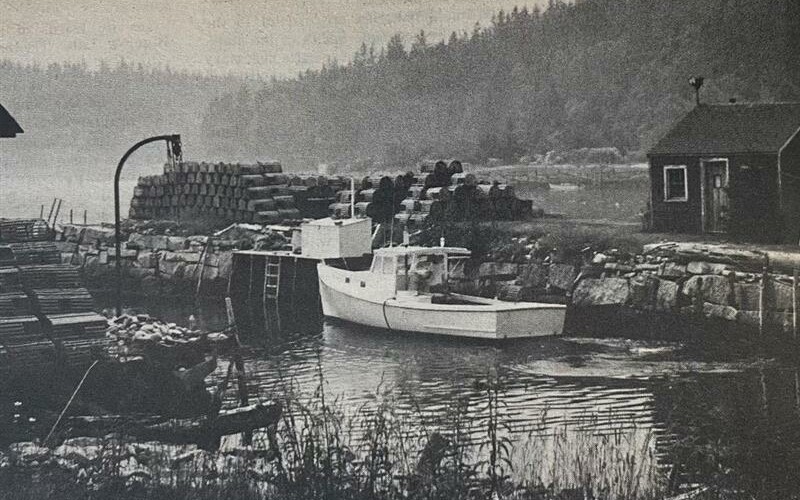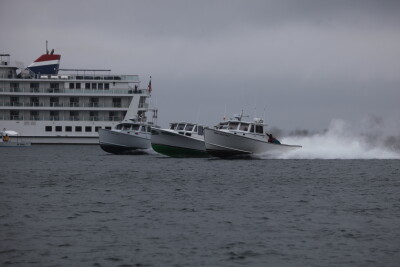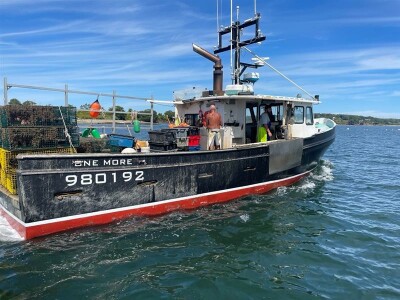Most lobster boats today are typically made of fiberglass rigged with a hydraulic hauler, VHF and CB marine radios, radar, and a depth sounder. Most range from 22’ to 45’ for inshore fishing and are even larger for offshore fishing. The evolution of the American lobster boats has come tremendously far, dating back to the days of fishing off from a dory or hand-built punt.
An article from April 1979 of National Fisherman by George Putz goes over the history of Maine’s lobster fishery and the boats lobstermen have used over the years. This article was reprinted with permission of Nautical Quarterly Inc. but rephrased for the purpose of sharing today.
A hundred or so years ago, when men in Maine began to think of catching lobsters as any kind of fishery at all, there was little need for a boat with all the bells and whistles. Lobsters were extremely abundant and some fishing families have stories of their elders collecting buckets of lobsters from tide pools at low water. At that time, it wasn’t anything special and to some it was even embarrassing.
It isn’t exactly clear what began to drive the value of lobsters upwards, to at least make it worthwhile, and this bears directly on the later development of boats that were to be built specifically for lobstering.
The market of lobsters grew in the 1880s and 1890s, and the boats such as sloop boats, shallop-type boats, and general service types such as dories and punts became the first image of a “lobster boat.”
The waters of Maine, maneuvering requirements, carrying, and handling requirements immediately began influencing the boats ordered by lobstermen. It was the development of reliable internal combustion engines with more power for their weight and size, and with casting technology that permitted effective internal block cooling, that molded all the smaller powerboats that fished before the 1920s.
All the other influences were related to constants that had to be preserved such as lines related to stability, motion, handling, and seakeeping behaviors.
The new gas engines after this time began to lose their lines that had descended from sailing and steam technology and began to look more like the lobster boats you see today.
As for the American lobster boat itself, it was brought into New England out of Cape Island in 1920s by William Frost and Royal Lowell.
This was the time of Prohibition, the widespead U.S. ban on liquor. Frost built hundreds of boats that were said to be the fastest of their size. Many of these boats were used to smuggle rum - the qualities that made them good for rum smuggling were also the same qualities that made them good for lobstering.
Royal Lowell was the boat designer for boat hulls such as Bruno, JC, Sisu, Newman, Harris, and others.
The Lowell family and Frost families were connected when Riley Lowell married William Frost’s daughter, Wilhelmina.
These two families had boatbuilding in their blood and would truly have a huge impact on what the traditional lobster boat is today.
For what’s remarkable about lobster boats is how much they differ from one hull to another. Even those made of fiberglass.
Boats that come out of a mold are finished on an assembly line differ in the way they feel, sound and work: for if anything characterizes lobstering, it is individuality.
A working lobster boat is inextricably part of her people. And so, the natural history of this kind of boat must in fact be a huge discussion among lobstermen.
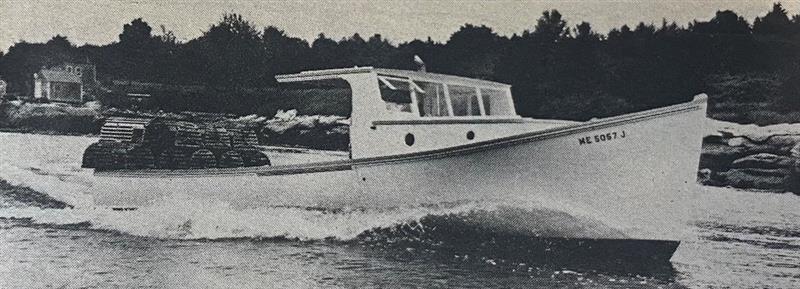
The personality of a lobster boat does not come from the boatbuilder, but comes from the previous experience that the man behind the helm gained from previous boats.
A captain who has pitched severely into a sea taken on the nose will tend to fill out subsequent boats up forward.
A man who has been taken at the knees and found himself overboard or nearly so, will be making the washboards a bit taller next time. Every aspect of a boat depends on the experience the boat owner previously weathered.
Even superstitions come into play, for there are lobstermen who forbid anything blue below the waterline. It would be shocking nowadays to find a marine engine with blue enamel. Further arguments rage among fishers over which side is best for hauling, and if you really should place a cage around the boat’s prop.
Lobstering and lobster boats have followed the course of all industries. A resource is identified and further, the market is created. The tools needed to exploit the resource at first are always simple and cheap.
As the market grows, the exploitation begins to place more stress on the resource, requiring more effort, more energy to continue exploitation, and inevitably more in the way of a market price for the goods.
This process continues until there is a technological breakthrough and an improvement of tools used to exploit the resource. Though this redevelops the market, it places further stress on the resource.
Lobster boats and the gear used for lobstering reflect this industrial process perfectly.
Early boats were made simple and acquired wood that was further fastened and fitted with locally forged iron. Lobster traps were made of locally gathered materials and were hauled by hand with rope made from natural fibers.
Within these early days, fishermen never had to go very far, or fish many traps to make a living.
However, each time there was an improvement in engine technology, in the materials for gear, in the equipment available for hauling, and in navigational aids- fishermen were able to increase their fishing grounds and increase the amount of gear hauled.
Each innovation would bring the lobster industry to what it is today, and the industry is guaranteed to see new improvements in gear, materials, and boats in the coming years.
Through the late 1900’s the ordinary lobsterman had gone from a capitalization of say, $100 for a string of 60 traps and a previously owned skiff, to a newly built boat and equipment from $45,000 to $60,000 just to get out there and fish.
It is extraordinary how a “little thing” can double the stress placed on a resource. During the 50’s, a V8 automobile engine literally doubled the amount of traps a man could fish effectively, and it helped harden territorial lines that men would still continue to abide by today.
When the hydraulic hauler and synthetic rope made an appearance, people were flabbergasted by the speed at which they could bring in 20 fathoms of rope. Until these were more common, the average fisherman with a healthy string of gear- say 600 pots- would need to make 100 to 150 new traps each winter to maintain his strings against normal losses.
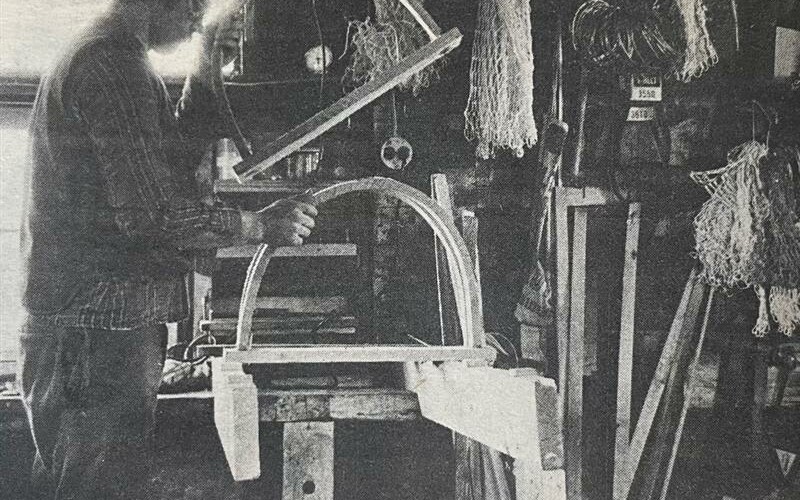
With the many industry improvements there had also always been emotional capital required of lobstermen as well. Most of the individuals that make up this industry always wanted to be a fisherman and fished with their father from a very young age.
Lobstering has been something engrained in these fishermen, and the community that undergoes all these industry changes wouldn’t want life to be anything but on the water from sunup to sundown.
As their boats, gear, and equipment get used very hard to the state of deterioration, these men and women that make up this fishing industry undergo the same weathers just to be doing what they love, on the boat that fits their personality better than any shirt on their back.
Not one lobsterman does things the same as the next and that’s the beauty behind a bay scattered with multi-colored buoys, and different hulls that are considered the classic American lobster boat.





